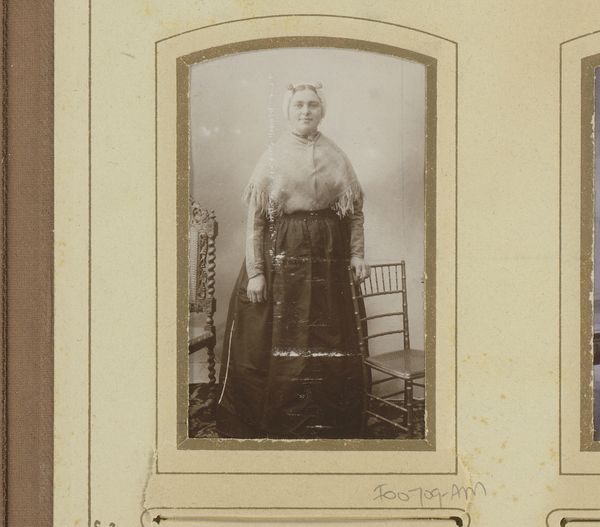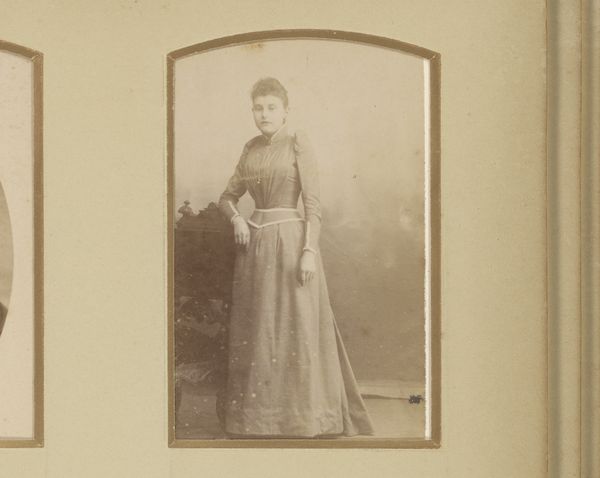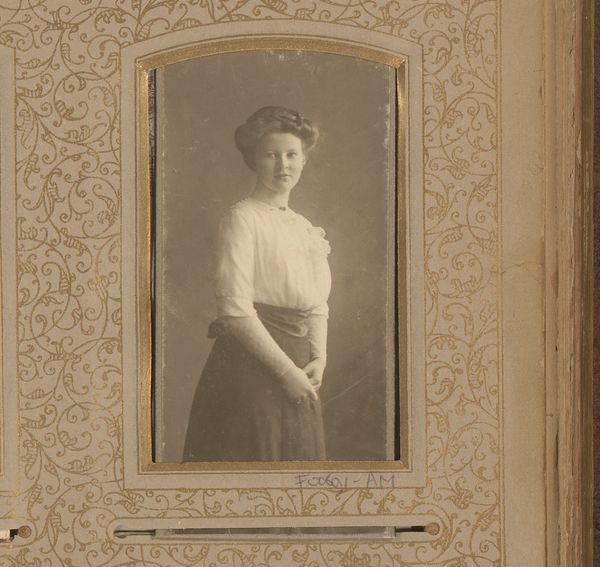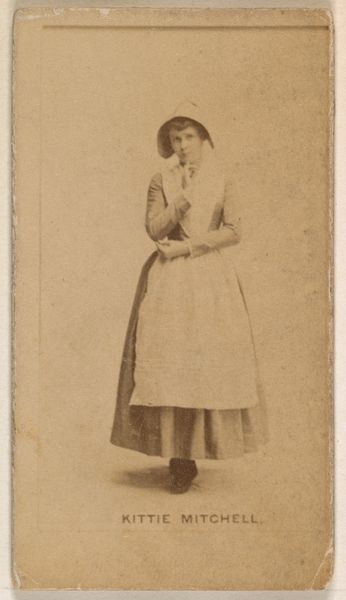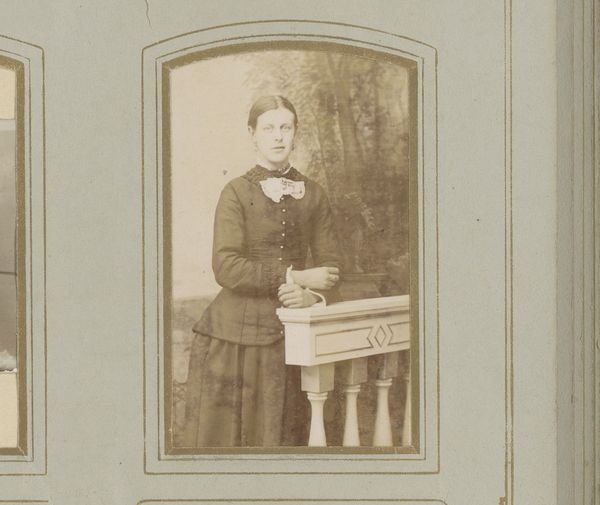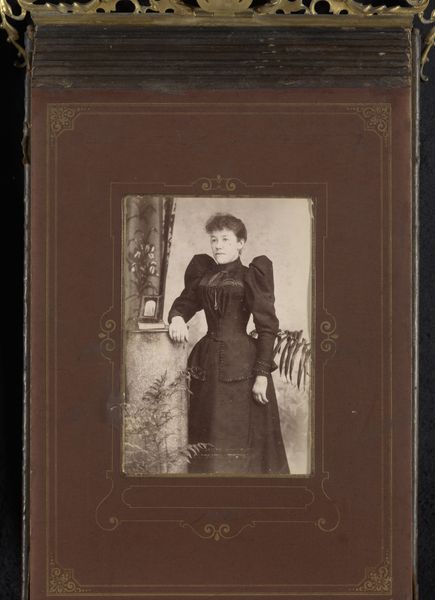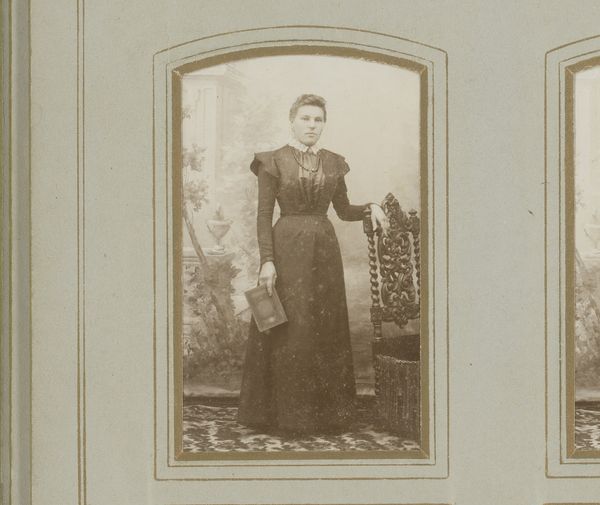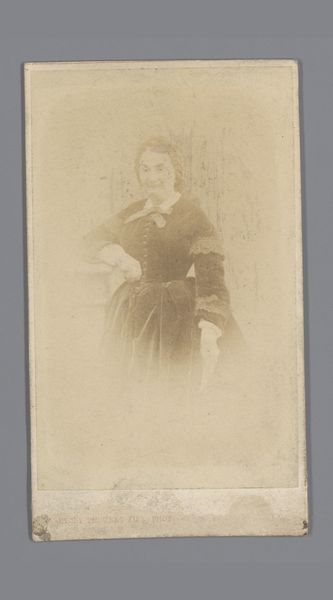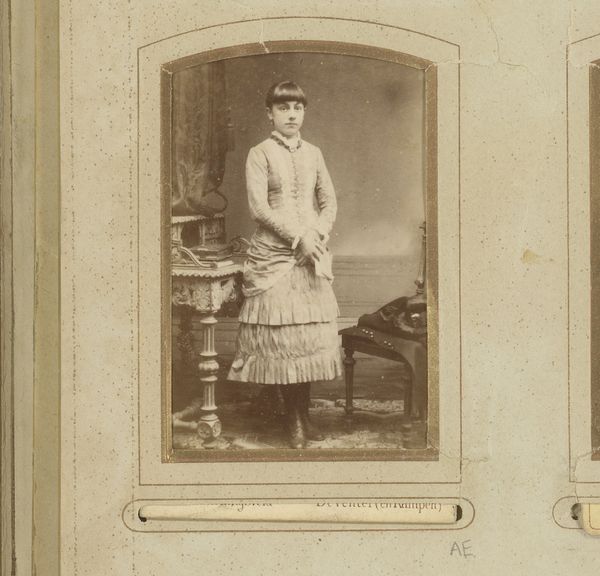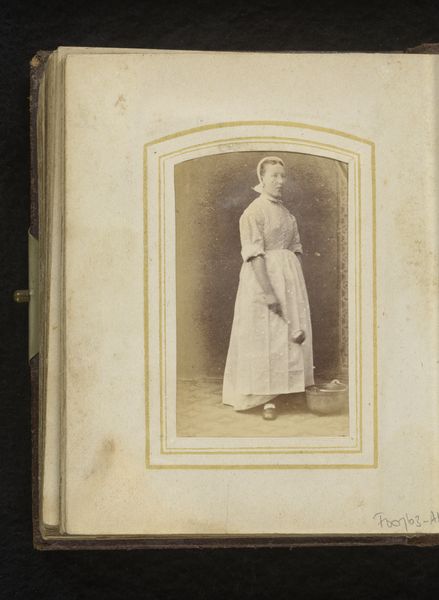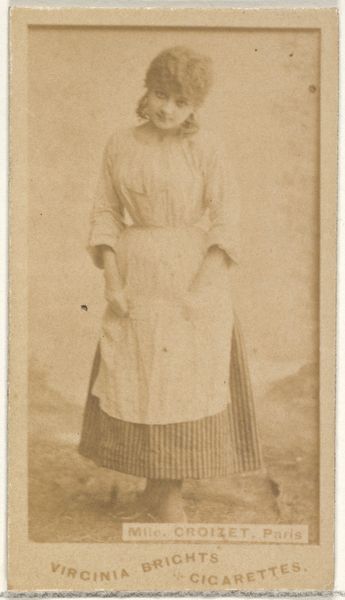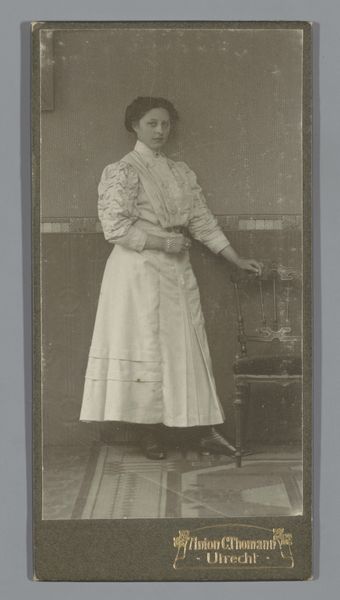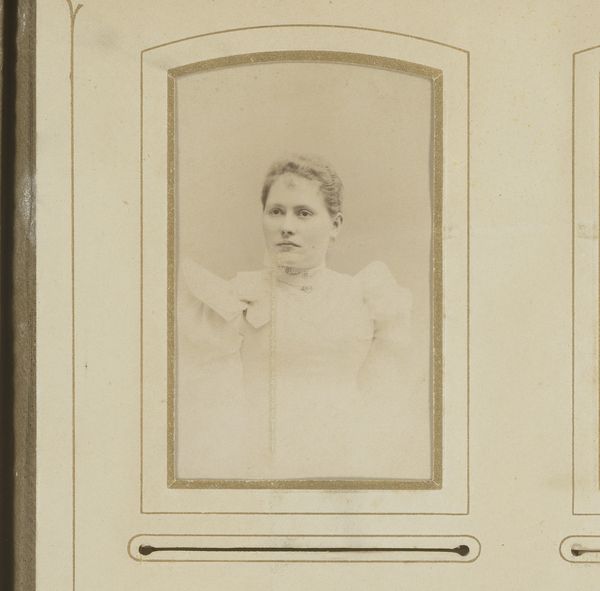
photography
#
portrait
#
charcoal drawing
#
photography
#
genre-painting
Dimensions: height 84 mm, width 51 mm
Copyright: Rijks Museum: Open Domain
Curator: Looking at this photograph, titled “Portret van een staande vrouw met schort en dienblad,” created sometime between 1857 and 1894 by Pieter Siewers, what’s your immediate response? Editor: There’s a quiet dignity. Her stance is very upright, but there's something melancholic in her eyes and in the sepia tones of the photograph. It almost feels staged in its formality. Curator: I think the staging is essential to unpack. In this period, particularly with early photography, a studio setting allowed for constructed narratives. The woman, possibly a domestic worker given her apron and tray, is very deliberately placed within a constructed view of labor and gender. What does the tray, or the absence of anything on it, suggest? Editor: That’s intriguing. The tray, typically an object of service and subservience, is empty, perhaps signifying unrealized labor or even a symbolic void. Maybe this is about challenging our pre-conceived notions surrounding gender roles. Is she defined only by what she serves? Curator: Exactly! It's playing with our assumptions. How is her identity constructed and consumed by the viewer? And this intersects with the photographic medium itself. Early photography granted a certain level of visibility to subjects often overlooked. Editor: Visually, I am also drawn to the way the frame crops the scene on either side—giving me the sense of looking into a peepshow, underscoring her perceived status. The gaze seems to reflect centuries of symbolic depictions of women in a service position. There is an uncomfortable cultural weight. Curator: I concur. We might also see that the photograph creates an interesting dynamic between public and private space, her labor taking on meaning and significance in a particular context. This photograph asks, Who has the power to represent whom, and to what end? Editor: Indeed, considering the photographer’s gaze is just as important as interpreting hers! It brings to light the tension of how identities are forged, visualized, and maintained through the apparatus of cultural consumption. What stories lie buried in what’s not explicitly stated here? Curator: Precisely. Siewers’ photograph prompts us to examine representation and power dynamics not only in art, but more importantly, within our broader society. Editor: Right. We can really dig deep into layers of historical and cultural meaning by understanding images like these.
Comments
No comments
Be the first to comment and join the conversation on the ultimate creative platform.
